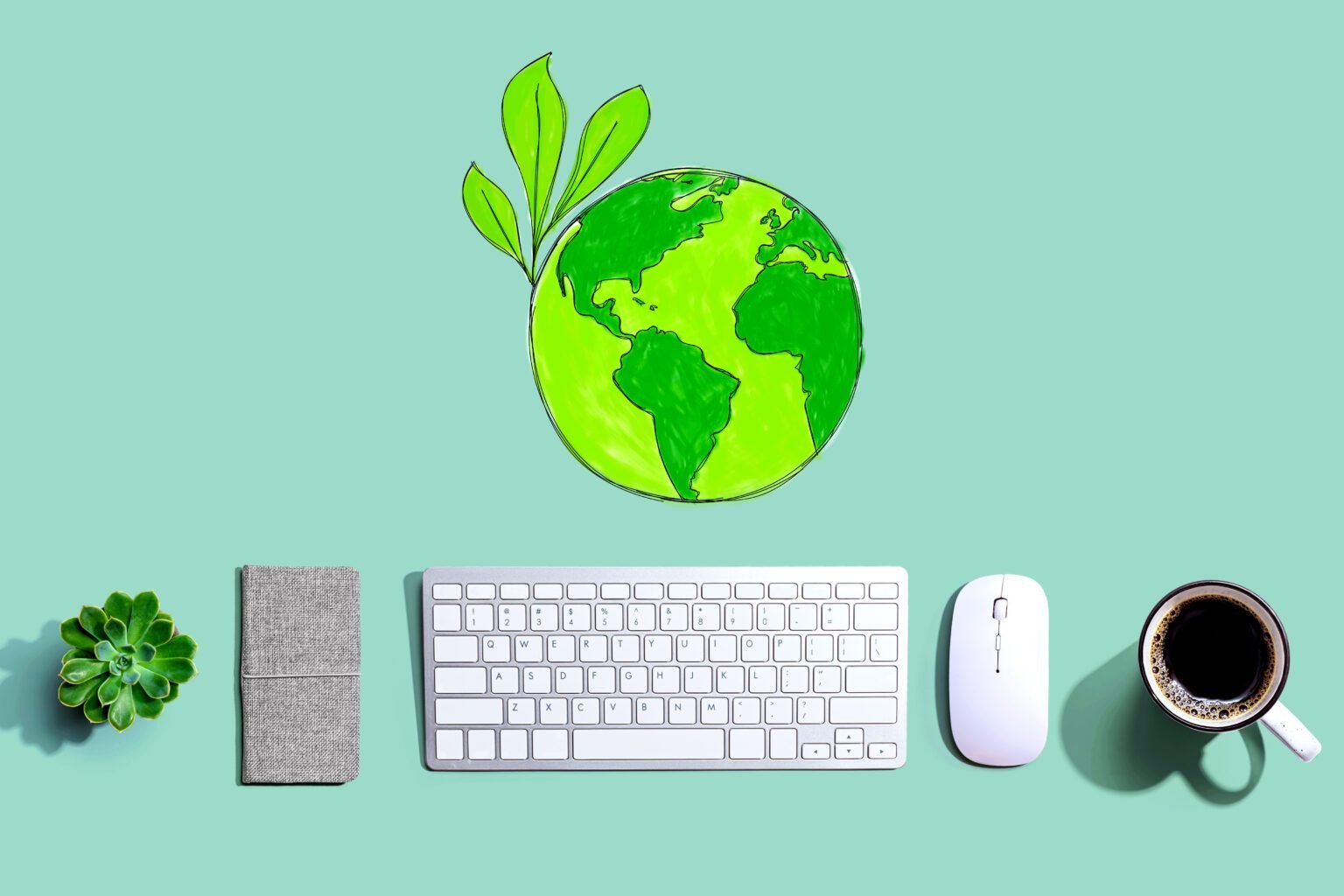Stephanie Dotto
With the traditional office fast becoming a thing of the past, more people are embracing work from home options, especially those with portfolio lifestyles. Not only is it more cost-effective to work from home – which makes all the difference amidst the rising cost of living – but it’s actually better for the environment.
In fact, studies have shown that working from home for even just one day a week can save over 379kg of CO2 emissions – roughly the equivalent of a short-haul flight from London to Istanbul – and 1% of annual global oil consumption via road transport, which would influence a 24 million tonne decline in CO2 emissions per year. Imagine the sort of impact that will have as more people continue to work remotely full time.
That’s not to say that working from home instantly marks you an eco warrior. Yes, you’re helping the planet by cutting back on your commute, but you’re also using more resources like energy, gas and water. Depending on regional differences and property sizes, one day of working from home could increase your household energy consumption by between 7% and 23% compared with a day working in an office. These numbers are projected to grow during the colder months when people rely more heavily on central heating.
So how can you ensure that you’re promoting a climate positive lifestyle in your home office? It’s not as complicated as you might think. Here are four simple changes you can make that will reduce your carbon footprint.
1. Be smart about workspace lighting

There are two ways you can light your office – natural light and eco-friendly artificial light. If you’re lucky enough to have a workspace with big windows and plenty of sun exposure, then by all means turn off the lights and take advantage of that when you can.
For those gloomier months (or if you just can’t harness the almighty power of the sun in the space you have), it’s worth investing in energy-saving alternatives like LED bulbs that use 40% less energy than the incandescent alternatives. We’d also recommend getting some smart power strips that can detect when a device isn’t being used and automatically cuts the power off.
For many people, natural light options are likely to be limited. You may not have a house in the best geographic location or maybe your work space is tucked away in a shadier part of the property. Don’t worry, there are still things you can do to enhance the natural light of a room, you just have to get a bit creative. For example, painting the walls white reflects natural light instead of absorbing it. You can also add reflective room features like high gloss paint and mirrors that catch and spread the light across the space.
2. Make your office green – literally

Back in the 1980s, the American biologist Edward O. Wilson came up with the concept of biophilic design, which was all about reconnecting people with nature. He noticed that the growth of big cities was forcing a greater detachment from the natural world, which, in turn, was having a negative impact on workers. That’s why modern offices are more likely to have plant life – it allows people to reconnect with that natural environment.
Plants aren’t just great to look at – they’re eco champions. Certain variations like orchids and succulents absorb carbon dioxide, releasing it as oxygen. They also increase humidity, which will make your workspace more comfortable. Plus, they have actually been proven to improve your health and overall mood. That’s because they boost air quality, increase comfort, and even influence productivity by making you more physically, cognitively and emotionally engaged in your work.
You don’t need to have a green thumb to look after office plants. With so many low maintenance options available, you can fill your space with plenty of natural inspiration. We highly recommend spider plants and cacti if you have a tendency to kill anything green.
3. Ditch the printer

Printers are one of those technologies that are hard to let go of, especially when you aren’t quite ready to embrace the full power of digitised workspaces and cloud technology. But just think about how much unnecessary waste you’re creating when you print out documents that could otherwise be saved on your desktop or even via an app. It’s not just the paper consumption that’s concerning – it’s the ink and the ink cartridges.
Did you know that 375 million empty ink and toner cartridges are thrown away every year? That’s eleven cartridges per second and one million per day. The ink cartridges we use are full of harmful chemicals that pollute water and soil once they reach the landfill. What’s worse, is that they take nearly 1,000 years to decompose. That’s pretty astounding when you see the numbers in plain black and white.
If you absolutely need to keep your printer, then you can go green by recycling your old cartridges and purchasing remanufactured ones (which are actually cheaper than buying new). You can also buy recycled printer paper and print double-sided to make your resources go further.
4. Cut down on waste

We create a lot of waste in traditional offices. Just think of all the scribbled out Post-its and disposable coffee cups you’re chucking away without a second thought. When your work days are spent at home, it’s far easier to adopt positive habits, but first you need to recognise the negative ones and learn to squash them.
It’s all about changing your patterns. If you spill coffee in the office, you’re probably mopping it up with a paper towel. At home, you can use a tea towel instead. In the office, you may be used to jotting down notes on disposable scraps of paper. At home, why not type up your notes on a Google doc or an app that syncs across all your devices?
It’s simple, when you think about it. What’s even better is that the small changes add up. Here are a few more things you can do to help eliminate waste at home:
- Use a refillable water bottle or cup instead of buying plastic bottles from the shop
- Recycle everything that you can
- Go digital instead of printing
- Invest in a cafetiere instead of using coffee pods
- Opt for minimally packed snacks like fruit instead of packaged alternatives
Energy waste is also a huge problem that most people aren’t considering. If you want to be more energy-efficient, we’d suggest:
- Turning on energy saving features on all your devices
- Switching off devices when you aren’t using them
- Installing a smart thermostat that turns off heating/ cooling when they’re not needed
- Ditching the desktop computer – laptops use way less energy
We all need to do our part
You don’t need to splash out a lot of money to convert your home office into an eco-friendly space (although, there are green alternatives out there for things like office furniture and devices you might want to consider). It all starts with understanding bad behaviours and making little changes where you can.

The good news is that working from home already puts you in a better position to reduce your carbon footprint. From there, it is up to you to ensure you’re practicing climate positive habits that make a big difference in the long run.
What other eco-friendly home office tips do you have for our community? Let us know in the comment section below. The more we all get involved, the better our planet will be!
Think this sounds like the right path for you? Come along to our monthly Community Welcome Call for new members to find out what a portfolio career could look like and how The Portfolio Collective can help you take those first steps towards professional success – and don’t forget to connect with our community!




4 responses to “4 Ways to create a more eco-friendly home office”
It’s so true about the plants! I have 9 plants in my home office, not counting the ones in pots on the external window sills.
Because of the advice I’ve gotten from the likes of @duncan-dalzel-job my plant family is growing in my office! Since going freelance/working from home full-time, I’ve also changed my energy provider so that the energy I use is on a renewable plan. Just need to work on my switch away from Coke Zero to tap water…that might be a harder one!
Really insigthful article
Totally agree, except I need to buy couple of plants first. I’ve reduced printer use as much as I can and each piece of precious paper is used both sides. Even if you don’t do it for the environment, at least do it for reducing cost.